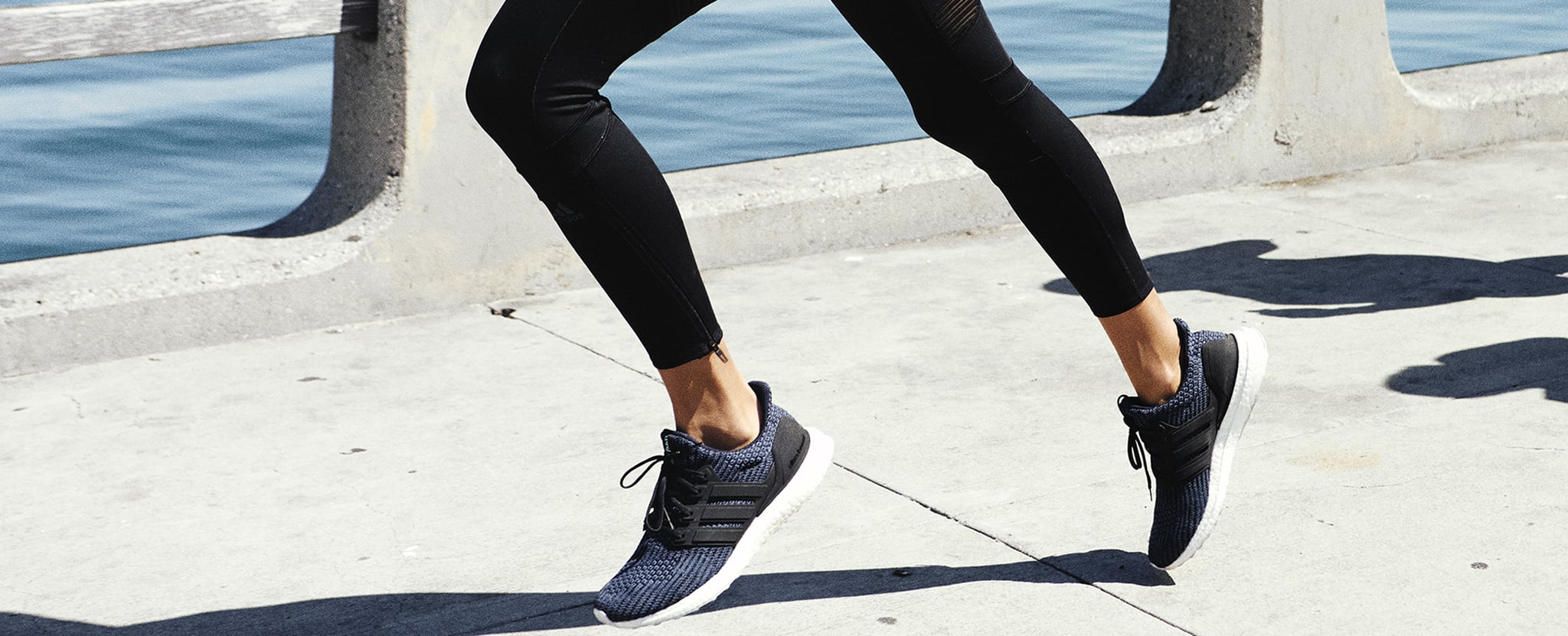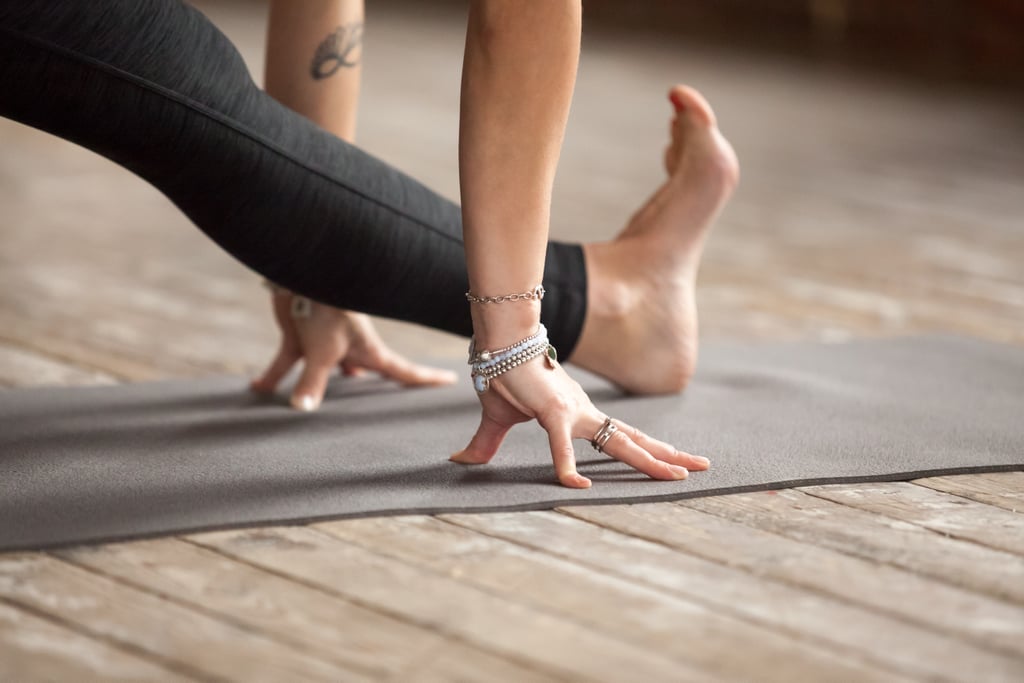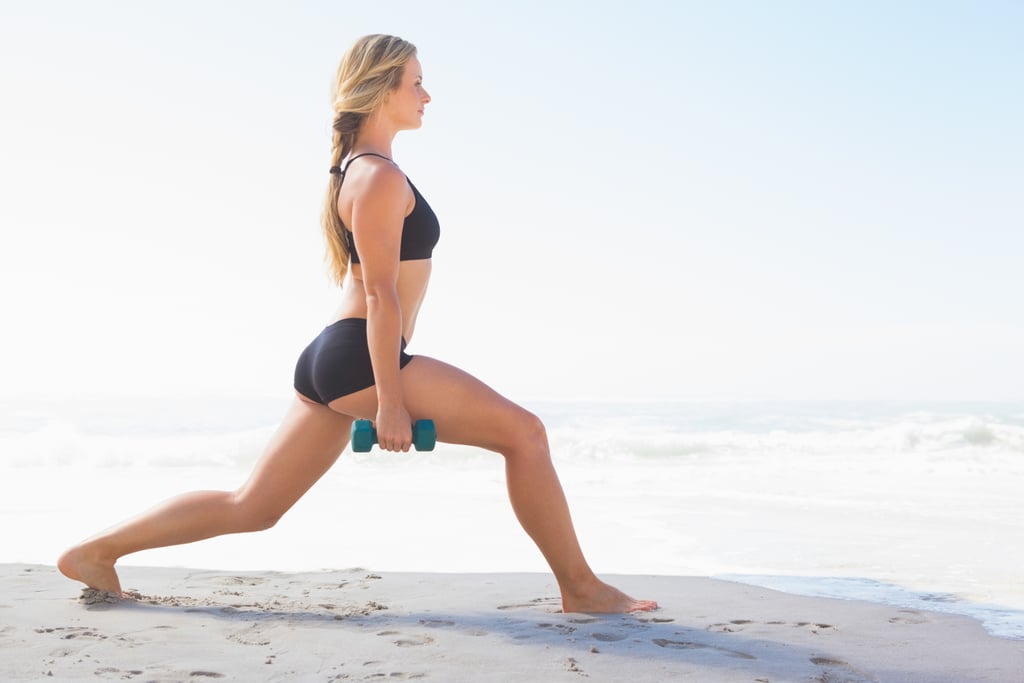
One Month Daily Running Plan
The 4-Week Guide to Making Every Run Count, Every Day

Starting a running habit that sticks isn’t easy, but any dedicated runner can attest that it’s well worth the effort. By tackling some of running’s biggest challenges — getting started, building distance, gaining speed, and tackling hills — one at a time, you can set yourself up for success. Ahead, we’ve put together four weeks of running inspiration to help you commit to a running habit that lasts.
Week 1: A Steady Pace

Sunday: Start Slow
A key part of of building up to a consistent running habit is knowing that you need to pace yourself before you ramp things up — and actually putting that into practice. Today, start out with a 20- or 30-minute walk to start getting your body moving and your heart rate climbing. The right gear is crucial to future success and consistency, so invest in adidas Ultraboost Parley running shoes (you're going to want to feel light on your feet). Extra bonus: each pair prevents 11 plastic bottles from entering the oceans.
Monday: Warm Up
Giving your body a chance to prepare itself for action is one of the best ways to ensure that you stay injury-free during any training program. By doing a pre-run dynamic warmup, you’ll ensure your body is in prime condition to take on whatever you throw at it. Try foam rolling, inchworms, and front and back leg swings to get things in motion.

Tuesday: Shake It Out
Go for a “shake out” jog today. Pick a distance that’s easily doable — whether it’s one mile or five — and keep the pace light. The idea is to remind your body what running feels like. Plus, you’re more likely to stick with it if your first few runs are fun.
Wednesday: Build Your Base
Some runners lose motivation due to a phenomenon called overtraining, which happens when they’re simply working out too frequently. In order to avoid burning out during this challenge (or at any other time), it’s important to listen to your body and build up a solid cardio and strength base before pushing your limits. Start with two to three runs per week. Once that feels manageable, you can consider increasing your training volume.

Thursday: Cool Down
How you end a running workout is just as important as how you start one. It’s tempting to sit down and rest immediately after finishing a tough run, but a proper cool down is necessary for muscle recovery and avoiding soreness. Finish each workout with five minutes of walking or easy jogging and reap the benefits.
Friday: Define Your "Why"
Today, ask yourself: why do you run? What’s your goal? Make a mental note of your answers, or write them down somewhere that's easily accessible. No matter what motivates you, defining your “why” will help you stick to your plan when your motivation is waning. Anytime you’re considering skipping a workout, coming back to your goal can help you stay on track.

Saturday: Stretch It Out
Stretching makes for a smart addition to any cool down or chill-out activity before bed. Plus, it can help alleviate the muscle soreness many runners experience. Even if you’re not having soreness now, you might in the weeks to come. Try these three stretches post-run for a quick hit of mobility.
1. Figure Four Stretch: Lie down and bring the outside of your right foot to the front of your left thigh with both knees bent. Grab your shin or behind your knee and pull your legs in toward your chest, keeping your head on the ground. Stay here for 30 seconds, feeling a stretch in your right glute. Repeat on the other side.
2. Butterfly Stretch: Sit with the bottoms of your feet pressed together and knees out to the sides. Lean forward and feel a stretch through your inner thighs and groin. Stay here for 30 seconds.
3. Couch Stretch: Stand with your back to a bench, couch, or box. Bend your left leg with your foot pointing behind you, and rest the top of your left foot on the bench. Slowly bend both legs until your left knee touches the ground. Lean forward to feel a stretch in your left hip flexor. Stay here for 30 seconds. Repeat on the other side.
Week 2: Going the Distance

Sunday: Test Yourself (and Your Gear)
This week, focus on upping your mileage. In order to build up to longer distances, though, running sneakers you feel comfortable in are a must. By now you'll appreciate adidas Ultraboost's support, stability, cushion, and traction every time you hit the road.
Monday: Run Disconnected
A killer playlist can help you power through the toughest runs, but veteran runners say that running “naked” (with no headphones or other tech) helps them develop a deeper connection with their breath and body while running. Today, ditch your headphones and trackers and take a medium-distance run. Listen to your breath, maybe even syncing your steps to it, and enjoy the feeling of running free.

Tuesday: Eat For Endurance
For long runs to feel fun, you need the right fuel. Your body runs on carbohydrates, so as you increase mileage, consider adding more carbs to your diet both pre- and post-workout. While no foods should be off limits, focusing on whole grains, starchy vegetables, and fruits will yield the best results.
Wednesday: Cross Training
As you start completing longer distances, your body experiences more wear and tear related to the repetitive motion of running. One way to increase your cardiovascular endurance while giving your body a break is by cross training. Try incorporating low impact activities like spinning, swimming, and rowing once or twice a week to boost your stamina while avoiding injury.

Thursday: Up Your Mental Game
Long distances are a mental struggle for many runners, so it helps to break them down into more manageable chunks. That way, your mind is occupied with slowly chipping away at smaller sections of a run rather than focusing on how impossibly long the total distance is. For example, instead of thinking of a five-mile run as a total unit, consider it as five one-mile chunks. Mentally reward yourself each time you finish a mile, and your run will be completed before you know it.
Friday: Rest Up
When distance comes into play, rest days become even more crucial. Each time you push your body to run an extra mile or two, you’re putting it under stress. That stress makes you stronger, but only with adequate rest. When you attempt a new distance and successfully complete it, take a rest day the following day. You can still be active, but avoiding running specifically will allow your body to recuperate.

Saturday: Run Long and Strong
You’ve been building up to this all week: It’s time to tackle a long run. Set a distance goal ahead of time, then go out and crush it. Remember to fuel up with a pre-workout snack or meal that’s rich in high-quality carbs, and break your distance up into smaller, less intimidating segments. You’ve got this!
Week 3: Sprints For Sustainability

Sunday: Gear Up
When you first start running, you’ll inevitably get faster — newbie runner gains are real. But as your body adjusts to the work you’re putting in, you’ll need to start incorporating speed sessions into your routine if you want to see pace improvements. While pushing the pace doesn’t necessarily feel fun in the moment, it’s likely to make your other workouts feel more rewarding. After all, who doesn’t like going fast? Adidas Ultraboost running shoes are equally equipped for distance and speed work, so this is one running buddy you won't get tired of.

Monday: Get Up to Tempo
Running comfortably is great, but in order to increase the speed at which you can run comfortably, you have to get a little uncomfortable. That’s the idea behind tempo runs, a time-tested tool runners and run coaches use to increase someone’s baseline pace. There are several ways to do a tempo run, but here are two of the easiest:
1. Set a distance shorter than your usual running distance. Then, select a target pace that is 15 to 30 seconds faster per mile than your usual pace. Complete the entire run at this pace.
2. Warm up for 15 minutes at your usual pace. Then run 20 to 30 minutes at a faster pace, increasing your pace by 10 seconds every five minutes. Be sure to do a cooldown jog afterwards.
Incorporate one tempo run per week, starting today.

Tuesday: Single Leg Exercises
When you think about it, running is essentially a single leg movement: You’re transferring your weight from one foot to the other, over and over again. That’s why single leg exercises can help make you a faster, stronger runner. Try these two on a regular basis, and you may notice that your speed sessions start to feel easier over time.
1. Walking Lunges: Start with your feet together. Step your right foot out in front of you, lunging forward. Touch your left knee on the ground lightly. Then step your left foot to meet the right. Repeat on the left side. Complete three sets of 24 reps, 12 per side. To increase the difficulty, hold a set of dumbbells in your hands at your sides.
2. Single Leg Deadlift: Stand with your feet at hip-width distance apart. Shift your weight onto your right leg, keeping a soft bend in the knee, and extend your right arm out toward the floor. Put your left hand on your left hip. Hinge forward, keeping both legs straight and your hips square, until you feel a stretch in your right hamstring. Then return to the starting position. To make it harder, add a dumbbell in your right hand. Complete three sets of eight reps on each side.

Wednesday: Core Appeal
A strong core is key for many athletic pursuits, including running faster. By building up a stronger midsection, you’ll be better able to stabilize your torso, which means more power in each stride. Incorporate these core-strengthening moves into your workout routine.
1. Dead Bug: Lie down on your back and bring your knees to a tabletop position at a 90-degree angle. Extend your arms up toward the ceiling, with your wrists stacked over your shoulders. Inhale, and on your exhale, extend your right arm back toward the floor and your left leg out toward the floor. At the end of the movement, both your right arm and left leg should be straight but not touching the ground. Move slowly back to the starting position. Repeat on the other side. Complete three sets of six to eight reps on each side.
2. Side Plank: Lie down on your right side, with your right forearm on the floor, stacked directly underneath your shoulder. Lift your hips up off the ground and squeeze your glutes. Stay here for 30 seconds. Repeat on the other side. Complete three sets. To kick things up a notch, lift your top leg up, pause, then lower it. Repeat eight times on each side.

Thursday: Focus on Form
Some of the power needed to get faster comes from having proper running form. By engaging your core, relaxing your shoulders, and not collapsing forward, you can avoid wasting energy. Complete a shorter run today, and focus on these three form cues. Before you know it, they’ll come naturally.
Friday: Hug the Curves
Here’s a quick trick to get tackle windy roads and trails faster. Hugging curves in the road or trail cuts down down the distance traveled, which means you can get through them in less time. This strategy is particularly useful when running races, but if you think you might use it, it’s worth practicing in a training run beforehand.

Saturday: Try a Circuit Workout
Even if you normally run on the road or on a trail, it’s worthwhile to switch things up with a looped workout every now and then, especially if getting faster is on your to-do list. Running on a different surface provides a little variety, and there’s something about running on a repeating route that just inspires speed. Try an interval workout, where you run two laps (800m) at 80 percent effort, then rest for two minutes. Repeat this sequence six times. As you get more comfortable, you can experiment with different interval lengths and speeds.
Week 4: Uphill Battle

Sunday: On the Incline
Even if you live somewhere that’s relatively flat, hills are simply a reality that you’re going to encounter at some point during your running career. That means opting not to train them isn’t really an option. And while most runners don’t love doing hills, with a little practice, they’re not all that bad. Find a hill in your neighborhood — you know, that one you’ve been avoiding — and tackle it today.
Monday: Build Strong Glutes
You use most of the muscles in your legs when you’re running uphill, but your glutes can especially help you power yourself up an incline — if they’re strong enough. By incorporating glute-building moves into your training plan, you can make hills feel a little bit easier.
1. Step Ups: Stand facing a bench, box, or platform. Place your right foot on the bench, transferring as much of your weight as possible onto that foot. This is your starting position. Push through your entire right foot to bring yourself to standing on top of the box, using your left foot as little as possible. Return to the starting position. Complete three sets of 10 reps on each side.
2. Glute Bridge: Lie down on your back and plant your feet on the ground with knees bent, slightly wider than hip-width distance apart. Cross your arms over your chest. Squeeze your glutes to lift your hips off the ground, stopping when your hips create a straight line from your knees to your chest. Lower back down to the starting position. Complete three sets of 15 reps.

Tuesday: Hill Repeats
To get better at running hills, you have to bite the bullet and run them. One of the best ways to do this is with an interval workout. Find a hill that will take you two to four minutes to run up, or get on the treadmill. Run up the hill (or set your treadmill to an incline of 5.0 or greater), then jog back down. Repeat this sequence four times. Congrats, you just finished your first hill workout!
Wednesday: Visualization
There’s a legitimate mental struggle to getting up a hill — particularly a super long or super steep one. That’s where certain mental strategies can be enormously helpful. One of the most common mental tricks used by veteran runners is visualization. If you see yourself making it to the top of the hill in your mind’s eye, chances are, you’ll do it in real life, too. Think about a hill you encounter in your neighborhood, or visualize yourself completing an incline run on the treadmill. How does it feel to get to the top? Make note of that feeling, then go out and get it in real life!

Thursday: Hill Sprints
Now that you’re comfortable with hills in general, let’s focus on pushing the pace. After completing an easy run, set aside a few minutes to run true hill sprints. These are at maximal effort, so you’ll be running as fast as you can uphill for a very short amount of time (think: 10 seconds.) Repeat this 8 times with 30 to 45 seconds of rest in between each sprint. By tacking this routine onto your workout one or two times per week, you’ll build speed, strength, and power going uphill and on flat terrain.
Friday: Recruit Your Calves
Calf muscles are often neglected in favor of larger muscle groups, but they not only help you get up hills, they also help you do it faster. Once you’ve started running hills, you’ll probably agree that anything you can do to get them done faster is a good idea. Building up your calf strength is one strategy that works well for many runners, and calf-specific exercises also help develop ankle strength.
- Calf Raises - Stand with feet flat on the floor. Push yourself up on your toes, then lower down slowly. Add dumbbells to intensify this exercise. Complete three sets of 15 reps after a running workout.

Saturday: Be Strong, Fast, and Powerful
You’ve put a whole month into getting your head in the game and becoming a better runner. Now it’s time to celebrate all you’ve achieved. Set out on a fun run and look at how much you’ve progressed since the start. Chances are, you’ll like what you see.